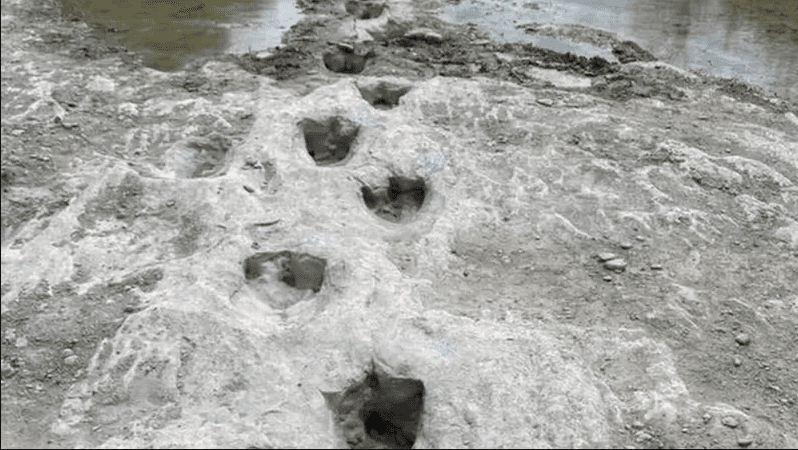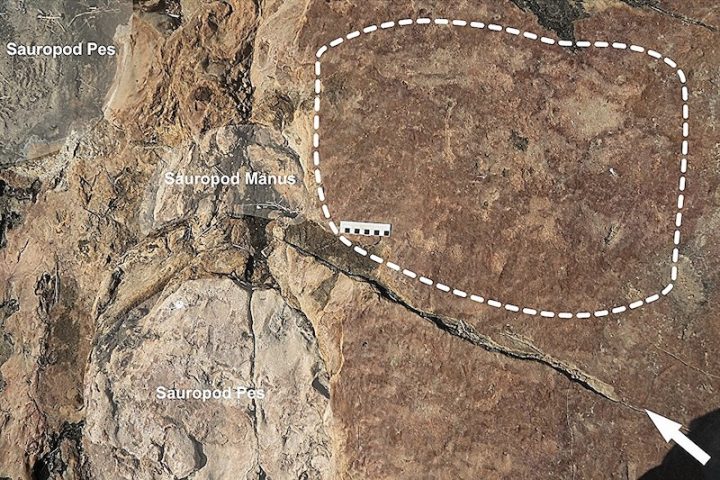Dinosaur footprints from 113 million years ago were unearthed in a riverbed in the US state of Texas after the river dried up in extreme drought.
The giant footprints are thought to belong to a single Acrocanthosaurus. The footprints, which were last seen in 2000, are usually found under water, even several layers below the soil.
Texas Dinosaur Valley State Park is one of the best-preserved areas in the world for such tracks.
According to the US Drought Monitoring Center, almost all of Texas is in a severe drought this year. Last week, 87 percent of the state was declared on extreme, very severe or severe alert. This summer has been even drier than usual, and the river that runs through the middle of the park in Texas has almost completely dried up. So dinosaur footprints have been spotted.
Park superintendent Jeff Davis told the BBC that the tracks were dubbed the “footprints of the lone guardian”; that a dinosaur of the Acrocanthosaurus species, up to 11 meters long, had walked this path; and that 60 of the 140 footprints are now visible.
Acrocanthosaurus, a theropod, is a three-clawed dinosaur that weighed about 7 tons.
Extreme weather events have led to other surprising events.
As Lake Mead, one of the largest reservoirs in the US, dried up and the water level dropped, lifeless human bodies were found.
Not all droughts around the world are caused by climate change. However, extreme heat in the atmosphere accelerates and worsens droughts.
The Earth’s temperature has risen by 1.2 degrees Celsius since the beginning of the industrial age. The temperature continues to rise. If steps are not taken to reduce carbon emissions, the rise in temperature could lead to even greater crises.
DINOZOR VALLEY PARK / Photo: PAUL BAKER
Source of the news: BBC





